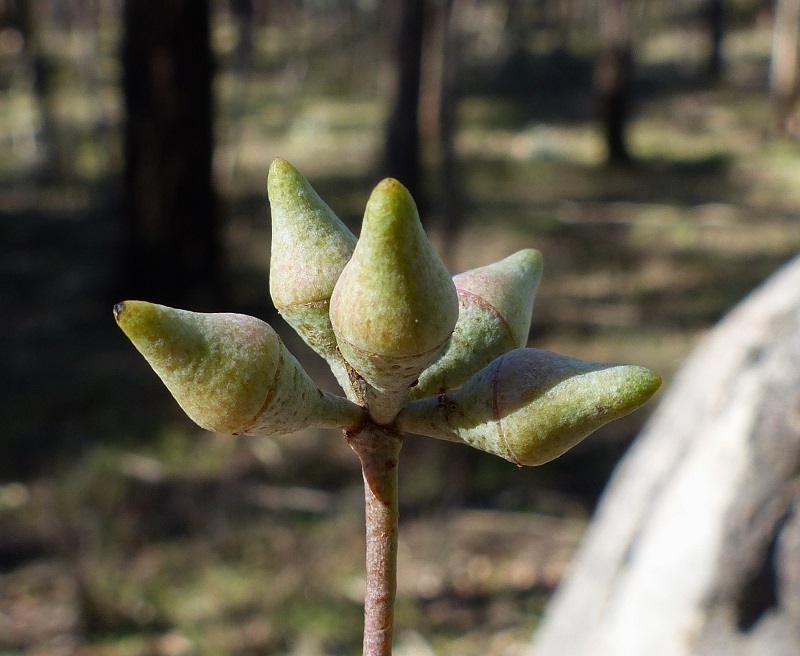Eucalyptus blakelyi
Maiden Blakely's Red-gumTree to 20 m tall; bark smooth, mottled, shedding at intervals throughout the year, showing white, yellow and grey. Juvenile leaves petiolate, alternate, ovate to broadly lanceolate, to 14 cm long, 10 cm wide, dull, blue-green; adult leaves petiolate, alternate, lanceolate, 10–16 cm long, 1.5–2 cm wide, concolorous, dull to slightly glossy, green; reticulation dense, with numerous, clear, yellow and green intersectional oil glands. Inflorescences axillary, unbranched; peduncles to 1.9 cm long, 7(–11)-flowered; buds pedicellate, fusiform, to 1.4 cm long, 0.6 cm diam., scar present; operculum long, conical; stamens erect (outer) and inflexed (inner); anthers dorsifixed, cuneate; ovules in 6 vertical rows; flowers white. Fruit pedicellate, hypanthium cupular to hemispherical, to 0.7 cm long, 0.8 cm diam.; disc level or ascending; valves 4, exserted; seed black, cuboid, pitted, toothed at edges, hilum terminal. Flowers winter–summer.
Wim, VRiv, GipP, Gold, CVU, GGr, NIS, EGU, HSF, HNF, Strz, MonT, VAlp. Also Qld, NSW, ACT. Occurring mainly north of the Great Dividing Range, on rising ground, often on rocky sites. From the Talgarno area and the Beechworth area to St Arnaud, the western limit of the species distribution, the trees are low and of poor form. It is also found on rocky sites along the Snowy River where it may intergrade with E. tereticornis.
Eucalyptus blakelyi belongs to the taxonomically difficult series of red gums which are poorly represented in Victoria. Individuals with pronounced glaucescence occur in some populations. These approach E. dealbata, which is generally also distinguished by its rounder buds and shorter opercula. Intergradation with E. camaldulensis occurs sometimes where the two come into contact, e.g. upper Murray River valley, foothills near Euroa. Another distinct form growing on granite hills and similar sites in north-east Victoria differs from the typical form (also in that region) mostly by a smaller, mallee-like habit and smaller leaves at all stages (see E. sp. aff. blakelyi (Strathbogie & Warby Ranges).
Brooker, M.I.H.; Slee, A.V. (1996). Eucalyptus. In: Walsh, N.G.; Entwisle, T.J., Flora of Victoria Vol. 3, Dicotyledons Winteraceae to Myrtaceae, pp. 946–1009. Inkata Press, Melbourne.
 Spinning
Spinning

